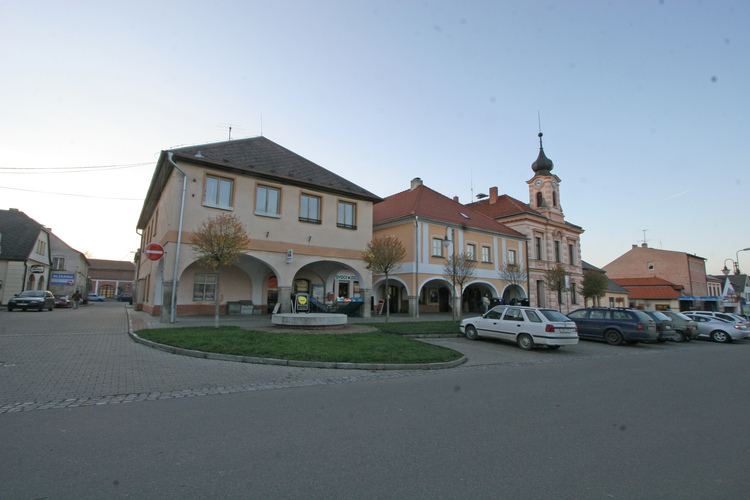- summer (DST) CEST (UTC+2) Area 27.49 km² | Elevation 376 m Local time Thursday 4:24 PM | |
 | ||
Weather 12°C, Wind NW at 14 km/h, 49% Humidity Neighborhoods Kobylí Hlava, Vrtěšice, Stupárovice, Nasavrky | ||
Krampus erti gol v jen kov 3 12 2016
Golčův Jeníkov ( [ˈɡoltʃuːf ˈjɛɲiːkof]; German: Goltsch-Jenikau) is a town in the Havlíčkův Brod District, Vysočina Region of the Czech Republic. It has around 2,600 inhabitants. It belongs to the historical land of Bohemia.
Contents
- Krampus erti gol v jen kov 3 12 2016
- Map of 582 82 GolC48DC5AFv JenC3ADkov Czechia
- Ud losti online krampus show gol v jen kov 3 12 2016
- Villages
- History
- People
- References
Map of 582 82 Gol%C4%8D%C5%AFv Jen%C3%ADkov, Czechia
Ud losti online krampus show gol v jen kov 3 12 2016
Villages
Kobylí Hlava, Nasavrky, Římovice, Sirákovice, Stupárovice and Vrtěšice are administrative parts of Golčův Jeníkov.
History
Jeníkov was first mentioned in 1150 in a letter from the Olomouc Bishop Henry Zdik . Secured the existence of the village is in the resulting 1344-1350 Description of the Diocese of Prague. In 1407 it was passed to secular owners. Among Chlumsky developed in the 15th Century the former village was a trading center and market rights. Part of its inhabitants were Jewish merchants and craftsmen. From the possession of the monastery Wilimov Zábělčice the village was added to the rule Jeníkov acquired. During the Hussite Wars, the city was a center of the insurgency. 1580 Johann Libeniczký acquired by Wrchowisst Jenikov. During the Thirty Years' War Jenikau in 1619 by the troops of General Bucquoy burned. Next owner was from 1632 to 1636 Jan Rudolf Trčka of Lipa. After the confiscation of the property of the General of the Ordnance was Maximilian Martin von der Goltz for his efforts in the liberation of Prague by the Swedish siege rule Jenikau with the associated 15 villages as an imperial gift. 1639 the Swedes ravaged by General Banér the place. Von der Goltz had to rebuild the site again and build the town hall. In the years 1650 to 1653 in addition to the old fortress, a new tower celebrations in early Baroque style. Together with his wife Maria Magdalena Juliana, born Opsinnig, he ran eagerly recatholicization the Utraquist residents and brought the Jesuits to Jenikau. During this period, the double name Goltz Jenikau from which, over the centuries the term "Goltsch developed-Jenikau / Golčův Jeníkov. After 1653, Baron von der Goltz later and four years his wife died without offspring, inherited their nephew Johann Dietrich von Ledebur possession with the rest to build a bell tower and the Jesuits to leave 1,000 guilders. After the forced Ledebur of 1673 by the Jesuits in court to comply with Goltz's legacy, he sold the rule of Countess Barbara Eusebia Caretto-Millesimo. In subsequent years, changed hands more than once. 1766 acquired by Philip Krakovský Kolowrat rule. His son Leopold Krakovský of Kolowrat made from 1774 to 1775 the old castle converted to a headquarters building in New Castle and a tobacco factory, which was to 1812. He founded in Goltsch-Jenikau the first needle factory in Europe and introduced the cultivation of alfalfa, clover and potatoes. 1773 handed Maria Theresia the Jesuit estate of Leopold Kolowrat. 1783 was the collection of the parish church of Dean Church. On 21 October 1784 large parts of the town were destroyed by a fire. After the death of Count Kolowrat inheritance dispute broke out that lasted until 1817 and the City brought the decline. The needle factory came in, and the tobacco industry has been to Sedlec with Kuttenberg postponed. 1817 bought the Kolowrats daughter, Louise von Herberstein, eventually to the rule. Her son Otto von Herberstein left in the years 1827 to 1828 and get ready for the tobacco factory headquarters, while she learned as the so-called New Castle a neoclassical redesign and was surrounded by an English park. 1830 Theresa acquired by Trautmannsdorff rule. She established the Castle Brewery. Between 1834 and 1836 was the demolition of the old parties. In 1838 Friedrich Ritter von Mr. Neupauer on Goltsch-Jenikau. He received a year later by King Ferdinand V privilege for six fairs. Following the replacement of patrimonial Goltsch-Jenikau in 1849 for independent municipality. In 1869 the first train ran the Austrian Northwestern Railway on the route from Kolin to Goltsch-Jenikau and in 1870 the operation between Deutschbrod and Goltsch-Jenikau added. In 1871 the synagogue was built. In 1890 in Goltsch Jenikau-lived 3768 people and in 1930 it was the 3516th On 13 February 1913 Goltsch-Jenikau became a town. Already in place in the previous centuries of documents had been dubbed a city, although he at that time did not yet have a city.
